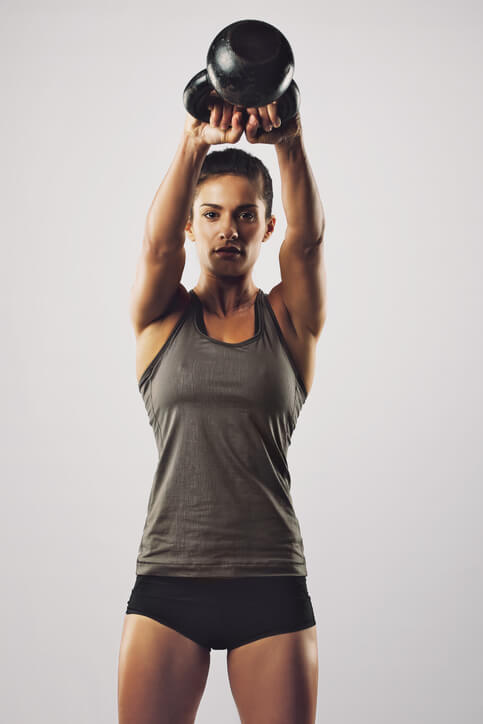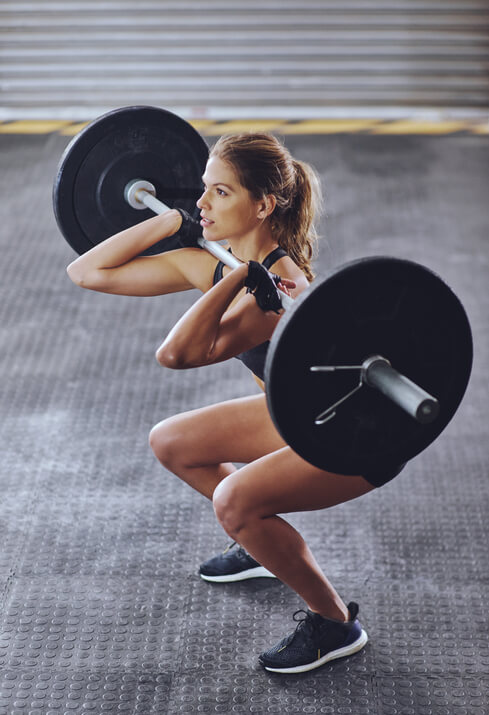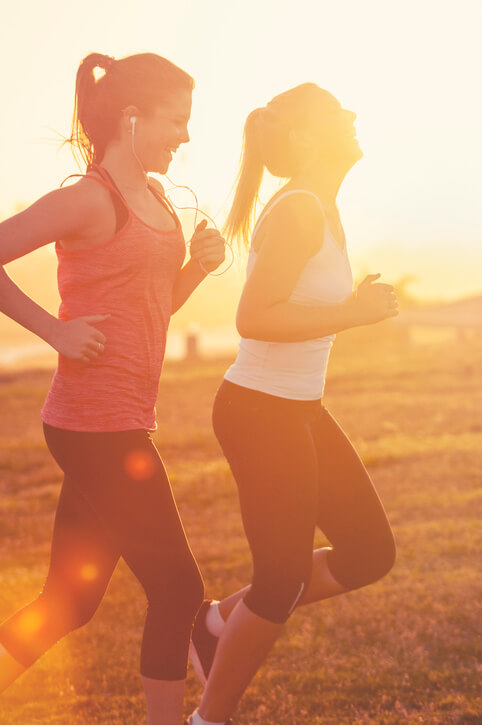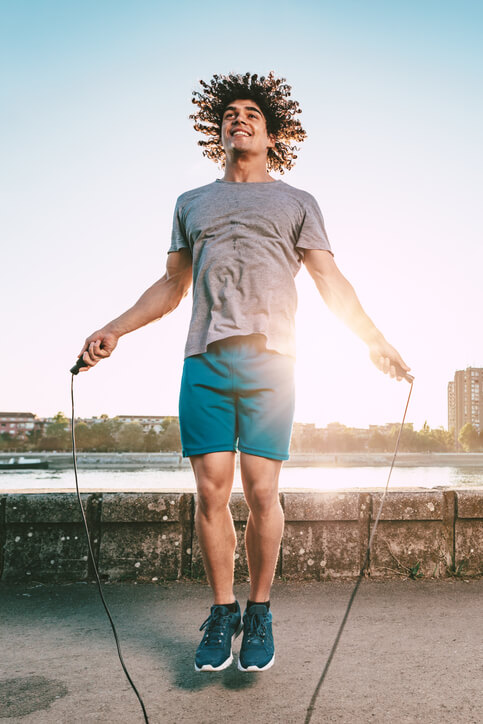
Post-Meal Do’s and Don’ts: Showering, Exercise, and Digestive Tips


Post-Meal Do’s and Don’ts: Showering, Exercise, and Digestive Tips
After a satisfying meal, what you do next can impact your digestion, energy levels, and overall well-being. While some habits might seem harmless, they might interfere with how your body processes food.
In this article, we’ll explore the post-meal do’s and don’ts, offering simple tips to support digestion and keep you feeling your best. Whether timing your next activity or making minor adjustments to your routine, these practical insights will help you optimize your post-meal habits.

The Science of Digestion After Eating
Digestion isn’t just about what happens in your stomach or intestines—it’s a complex process that involves your entire body working together to make it possible.
Before you even eat, your body prepares through the anticipation and ingestion phase. During this phase, your heart rate increases, your heart pumps more blood, and your blood pressure rises slightly. These changes help ensure that once you start eating, your digestive organs will have the extra blood flow they need to break down your meal.
After you’ve eaten, digestion requires even more support. Your digestive organs, like the stomach and intestines, need blood and oxygen to fuel the processes of breaking down food and absorbing nutrients. To meet this need, the body increases oxygen consumption in the digestive system and boosts blood flow to these organs.
Substances called vasodilators, such as acetylcholine, play an important role here. They help widen blood vessels, making it easier for blood to carry oxygen and nutrients to where they’re needed most.
The nervous system also plays a key role in supporting digestion. Specific nerves, known as cholinergic nerves, help increase blood flow to your digestive organs. This is crucial for delivering nutrients from the bloodstream to the cells in your digestive tract.
After eating, your body breaks down food and releases glucose into your bloodstream, increasing blood sugar. To manage this, the pancreas releases insulin, which helps move glucose into cells for energy or storage. How effectively this process works depends on factors like digestive efficiency, insulin sensitivity, and the health of your circulatory and nervous systems.
These interconnected processes highlight how digestion depends on precise coordination across the body. The circulatory and nervous systems don’t simply support digestion—they actively adjust to meet its demands, ensuring oxygen, nutrients, and resources are delivered exactly where needed to keep you nourished and energized.
What you do after eating can influence how well these systems perform, either supporting or disrupting the flow of blood and oxygen to your digestive organs.

Exercise After Eating: What the Research Says
Any exercise is beneficial, especially if your lifestyle is sedentary overall. In the long run, regular intense exercise, particularly resistance training, improves your overall blood sugar control at any given time .
However, these intense exercises and up/down movements like running may disrupt digestion if done too soon after eating. Whereas, light exercise like walking can support both digestion and post-meal blood sugar.
Some people may have to fit exercise into their schedule when they can, and it’s better than no exercise at all. However, if you want to prioritize optimal digestion, do intense exercise before meals, 0.5 – 1 h after snacks, or 2 – 3 hours after meals, and take walks after meals.
How and when you move after eating can have a big impact on your digestion and blood sugar levels. Research sheds light on why light exercise, like walking, stands out as a simple yet effective way to support these processes.

Benefits of Light Exercise (e.g., Walking)
One way to support digestion after a meal is through light exercise. Walking, for example, can help regulate glucose levels, depending on when and how you move.
A study of 21 healthy young volunteers examined the effects of post-meal walking on the body’s glycemic response after meals with varying carbohydrate content and macronutrient composition. It consisted of two trials.
In the first trial, 10 participants consumed meals with either 0.75 or 1.5 grams of carbohydrates per kilogram of body weight. They either took a brisk 30-minute walk or remained seated after their meal.
In the second trial, 11 participants consumed a carbohydrate drink or a mixed meal, each containing 75 grams of carbohydrates, and then either walked or stayed seated.
Exercise consistently lowered blood sugar levels compared to no exercise. On average:
- After a meal with 0.75g carbs per kg, blood sugar was 32.43 mg/dL (1.80 mmol/L) lower after exercise.
- After a meal with 1.5g carbs per kg, exercise reduced blood sugar by 27.57 mg/dL (1.53 mmol/L).
- In the second trial, exercise reduced blood sugar by 29 mg/dL (1.61 mmol/L) after the oral glucose tolerance test and 32.79 mg/dL (1.82 mmol/L) after the meal.
Overall, this study suggests that a 30-minute brisk walk after meals can improve glycemic control in healthy individuals, highlighting the potential benefits of incorporating light exercise into your post-meal routine.
Timing and Types of Exercise
The benefits of movement around mealtime don’t mean you can do it any old time and expect results.
A meta-analysis of eight studies exploring the effects of light to moderate exercise like walking or resistance training came to the same conclusion as the above study with some extra insights:
- Timing matters: The sooner you exercise after a meal, the more it helps lower blood sugar. Waiting too long to exercise weakens this effect.
- Light exercise before a meal doesn’t help with blood sugar spikes: Walking at any time is generally healthy and beneficial, but before meals it doesn’t help regulate blood sugar as much as after meals.

Exercise Intensity
While light activity post-meal is beneficial, you should likely steer clear of moderate to high-intensity exercise too soon after a meal. Remember, we talked about the importance of blood flow in digestion to ensure that your digestive organs receive the oxygen and nutrients they need to break down and absorb food properly.
Exercise causes your body to redirect blood flow to the muscles to supply them with the oxygen and nutrients they need to keep you moving. At the same time, blood flow to your digestive system decreases, which can limit the oxygen and energy available for breaking down and absorbing food.
The intensity of exercise plays a big role here. Moderate activity reduces gastrointestinal blood flow by around 40–50%, but with high-intensity exercise, blood flow to the digestive system can drop by as much as 70–80%. This dramatic reduction can impact digestion, potentially leading to slower processing of your meal or even discomfort.
This significant reduction in blood flow to the digestive system during these types of exercise may also contribute to the gastrointestinal symptoms commonly experienced by athletes. The most documented examples are the gut effects of endurance and ultra-endurance sports. Studies reporting 37-89% of participants experiencing:
- Nausea
- Abdominal cramps
- Diarrhea
- Vomiting
In extreme conditions, the prevalence of gastrointestinal symptoms can be as high as 93%.
The good news is that you can train your body to handle these challenges better. Some of these endurance athletes practice eating or drinking during exercise, to train their gut to adapt and avoid discomfort during competitive events.
This may not be exactly healthy or applicable to everyone–if you’re running, swimming, or cycling for 3 – over 6 hours, it makes sense that you need to eat during your events to keep up your performance.
For instance, athletes who followed a high-carb diet for 28 days experienced improved sugar absorption during exercise, which may help reduce the risk of stomach problems. Similarly, practicing fluid intake during workouts helped runners feel more comfortable, even if it didn’t speed up how quickly their stomachs processed fluids.
By gradually incorporating food or fluids during training and timing meals appropriately before high-intensity sessions, you can support digestion and improve comfort.
Regular exercise also improves how efficiently your muscles use oxygen and balance the stress response, allowing your body to better balance blood flow between the muscles and digestive organs during physical activity.

This is also not to say that you should avoid high-intensity exercise in general. High-intensity exercise can offer significant benefits, especially for improving how your body uses insulin.
A review of six studies explored how high-intensity exercise affects blood glucose levels. Researchers found that healthy young adults performing two to three sessions of just 15 minutes of intense exercise per week over two weeks experienced improved overall insulin sensitivity. Insulin regulates blood sugar levels, and high-intensity training may improve insulin action by:
- Using glycogen stores in your muscles
- Activating a beneficial enzyme in your muscles called AMPK, which stimulates several adaptation responses and temporarily ramps up overall energy production
- Moving glucose transporter 4 (GLUT4) to the top of your muscle surfaces, so they’re more ready to take up glucose from your bloodstream
Therefore, you should incorporate high-intensity exercise in your routine as long as you can do it safely and not right after eating.
Swimming
You’ve probably heard the old saying to wait 30 minutes after eating before getting into the pool. You may have also heard it’s a myth. Let’s clear up the confusion and explore what it means for digestion. Some researchers finally put it to the test.
A study compared participants’ experiences swimming immediately after eating versus waiting 30 minutes. Participants reported feeling less discomfort when they waited 30 minutes before swimming. Only two participants noted mild gastrointestinal symptoms during the study—one experienced flatulence, and the other felt bloated. No one got cramps, and no one drowned.
We’ve already talked about how the intensity of exercise can affect digestion above, but different factors are at play while swimming. Buoyancy, for instance, reduces the impact of gravity, leading to a redistribution of blood flow toward the body’s core. Centralization can redirect blood away from the digestive organs as the body channels it to support muscles and vital organs.
Hydrostatic pressure, created by the weight of water and immersion, creates a pressure gradient that shifts blood distribution. This pressure can slightly compress the abdomen, potentially influencing digestion by altering blood flow to the gastrointestinal tract.
Temperature plays a role too. Swimming in cooler water narrows blood vessels (vasoconstriction) and directs blood to vital areas like muscles, which can slow digestion or cause discomfort.
So, swimming right after eating is not a safety concern, but a brief rest might help you feel more comfortable regarding the digestive process. Go ahead and wait 30 minutes before jumping into the pool. Now, what about stepping into a shower or bath after a meal?
Showering and Bathing After Eating: Effects on Digestion

You’ve just finished a meal and need to jump in the shower or would love to go for a good soak, but you’re unsure whether it might affect your digestion. While I don’t have a definitive answer for you based on focused studies, we can learn and apply some of the scientific principles we’ve already discussed above.
Taking an immediate bath likely isn’t a great idea. Just like swimming, immersing yourself in a bath can affect digestion because it redirects blood flow.
When you soak in water, especially if you’re fully submerged, hydrostatic pressure from the water can shift blood circulation away from the digestive organs and toward the muscles and vital systems. This is because your body prioritizes blood flow to support your body’s primary functions, such as maintaining temperature and sustaining muscle activity, rather than digestion.
I’ve made the mistake of taking a bath after dinner and experienced digestive discomfort. It seemed to slow down my digestion, and I was left feeling uneasy as it seemed to take longer for my body to process the meal.
Blood Flow and Digestion During Showers
Similar principles apply during showers. Before you step into the shower, your body directs blood flow to support digestion—breaking down food, moving it through the system, and absorbing nutrients.
When you shower after a meal, blood flow shifts away from digestion to regulate your body’s temperature and adapt to the water’s warmth or coolness. Although the impact might not be as pronounced as with total immersion in a bath, it’s still worth considering how much time you give your body to digest before jumping in for a rinse.
Hot vs. Cold Water
Some people say it might be okay to shower as long as it’s in cold water, but that’s not entirely clear. When you immerse yourself in water, whether hot or cold, your body responds by altering blood circulation to regulate temperature.
A study examined the effects of cold, neutral, and hot water on circulation by testing participants in four conditions: sitting dry, neutral water immersion, cold water immersion, and hot water immersion. The results showed how different water temperatures influence blood flow, which can, in turn, affect digestion.
In cold water immersion, the body reacts by constricting blood vessels, a process called vasoconstriction. This reduces blood flow to the extremities, including the digestive system, as the body focuses on preserving heat and maintaining core temperature. The increased resistance in peripheral blood vessels helps redirect blood to vital organs like the brain and heart, which need more circulation to function properly in cold conditions.
In contrast, hot water immersion causes vasodilation, where blood vessels expand to release heat. This increases blood flow to the skin and surface tissues to cool the body down while reducing blood flow to internal organs, including the digestive system. As a result, digestion can slow down due to less blood reaching the digestive organs.
With neutral immersion, however, participants experienced a more balanced cardiovascular response without needing the body to increase or decrease blood flow.
Therefore, based on blood flow, if you’re going to shower right after eating, it would likely be best to stick to a neutral water temperature of 82.4°F to 89.6°F (28°C and 32°C), which is a little cooler than a standard warm bath.
Ayurvedic Wisdom
While we’ve explored the effects of bathing after eating from a scientific perspective, it’s also worth considering what ancient healing traditions, like Ayurveda, have to say about this practice.
Ayurveda, the traditional system of medicine from India, emphasizes the balance of elements within the body to maintain health. One area of focus in Ayurveda is digestion, known as “Agni,” or digestive fire. This concept highlights the importance of nurturing the digestive process with care, particularly after meals.
According to Ayurvedic principles, avoiding bathing immediately after eating is advised, as it may disrupt the body’s ability to digest food properly. This belief is rooted in the idea that bathing, especially in hot water, can disturb the body’s internal balance, cooling the digestive fire and potentially slowing digestion.
It’s thought that the body’s energy directs itself away from the digestive organs while it processes the external temperature of the water. As a result, Ayurveda suggests bathing before eating rather than after.
Best Practices for Post-Meal Habits

In this article, you’ve learned that how you move and care for your body after a meal can influence digestion and nutrient absorption. While you may be tempted to lie down or rush into intense activity, certain habits can help support your digestive system as it processes food. Here are some best practices for post-meal habits that can enhance digestion.
Engage in Light Physical Activity (e.g., Walking)
A simple way to support digestion after a meal is through light exercise, such as going for a brisk walk. This can help regulate blood sugar levels and promote better digestion, but the timing and intensity of your movement are important factors.
Avoid Vigorous Exercise
While light physical activity can aid digestion, avoiding intense exercise right after eating is best. Vigorous activity can redirect blood flow away from your digestive system, which may slow down digestion.
Maintain an Upright Posture And Allow Time Before Lying Down
You might have the urge to lie down after a big meal, but it’s best to stay up to support healthy digestion and nutrient absorption.
A study examined how different body positions affect how quickly the stomach empties and how well the body absorbs nutrients after eating. Eight healthy men took part in the study, consuming 22 grams of protein and 1.5 grams of paracetamol in two positions: sitting upright and at a 20-degree angle, with their heads lower than their bodies.
Those in the head-down position absorbed fewer nutrients than those in the upright position. Specifically, the level of leucine (an important amino acid) in the blood was lower when participants were tilted, and the body’s response to other amino acids was also weaker. Additionally, the absorption of paracetamol, used as a measure of stomach emptying, was reduced in the head-down position compared to when sitting upright.
These findings suggest that digestion and absorption are more efficient when you remain upright after eating, as the body is better able to absorb nutrients when in a natural seated position.
Moderate Bathing and Showering Habits
It might not be ideal to jump into a bath or shower immediately after eating. Water immersion, particularly a full bath, can redirect blood flow away from your digestive system, making it harder for your body to process and absorb food efficiently.
This is because the body prioritizes regulating temperature and supporting muscle activity, which can slow down digestion. While a shower may not have as strong an impact as a bath, it’s still important to give your body time to digest before exposing it to temperature changes.

Mindful Eating and Relaxation
Okay, this is more of a during-meal habit, but it can greatly benefit digestion, so it’s worth discussing.
Mindful eating is a simple yet effective practice that enhances digestion by promoting relaxation and supporting the body’s natural digestive processes. By paying full attention to the sensory experience of eating, you become more aware of hunger and fullness cues, which can help prevent overeating and improve digestive efficiency.
Eating slowly, chewing food thoroughly, and reducing distractions allow the body to focus on digestion, optimizing nutrient absorption. Mindful eating also activates the parasympathetic nervous system, reducing stress and supporting gastrointestinal function.
By slowing down and focusing on the present moment, you give your digestive system the attention it needs to process food effectively. Simple habits, like savoring your meal or using smaller plates, can make a big difference in how well your body digests food and maintains gastrointestinal health.
Optimize Your Digestion
If you’re looking for a little extra digestive support, consider our BIOptimized Digestive Health Stack. This combination of HCL Breakthrough, MassZymes, and Probiotic Breakthrough is designed to optimize digestion and nutrient absorption. These may reduce the post-meal fullness or heaviness.
HCL Breakthrough supports healthy stomach acid levels and gut movement, while MassZymes delivers a full spectrum of digestive enzymes to break down food more effectively. Probiotic Breakthrough, a powerful probiotic strain, helps maintain a healthy balance of gut flora and supports overall digestive function.
References
- Kvietys PR. Postprandial Hyperemia. Morgan & Claypool Life Sciences; 2010.
- Bollinger L, LaFontaine T. Exercise programming for insulin resistance. Strength Cond J. 2011;33(5):44-47. doi:10.1519/ssc.0b013e31822599fb
- Bellini A, Nicolò A, Bazzucchi I, Sacchetti M. The effects of postprandial walking on the glucose response after meals with different characteristics. Nutrients. 2022;14(5):1080. doi:10.3390/nu14051080
- Engeroff T, Groneberg DA, Wilke J. After dinner rest a while, after supper walk a mile? A systematic review with meta-analysis on the acute postprandial glycemic response to exercise before and after meal ingestion in healthy subjects and patients with impaired glucose tolerance. Sports Med. 2023;53(4):849-869. doi:10.1007/s40279-022-01808-7
- Brouns F, Beckers E. Is the gut an athletic organ? Digestion, absorption and exercise. Sports Med. 1993;15(4):242-257. doi:10.2165/00007256-199315040-00003
- de Oliveira EP, Burini RC, Jeukendrup A. Gastrointestinal complaints during exercise: Prevalence, etiology, and nutritional recommendations. Sports Med. 2014;44(S1):79-85. doi:10.1007/s40279-014-0153-2
- Adams P. The impact of brief high-intensity exercise on blood glucose levels. Diabetes Metab Syndr Obes. Published online 2013:113. doi:10.2147/dmso.s29222
- O’Neill HM. AMPK and exercise: Glucose uptake and insulin sensitivity. Diabetes Metab J. 2013;37(1):1. doi:10.4093/dmj.2013.37.1.1
- Weenink RP, Wingelaar TT. The circulatory effects of increased hydrostatic pressure due to immersion and submersion. Front Physiol. 2021;12. doi:10.3389/fphys.2021.699493
- Bonde-Petersen F, Schultz-Pedersen L, Dragsted N. Peripheral and central blood flow in man during cold, thermoneutral, and hot water immersion. Aviat Space Environ Med. 1992;63(5):346-350.
- Bhoyar S, Khan A, Tirpude S, Dhande N. A review on importance of snana (bathing) in dincharya according to Ayurveda. Int J Curr Res Rev. 2021;13(08):83-86. doi:10.31782/ijcrr.2021.13817
- Holwerda A, Lenaerts K, Bierau J, Van Loon L. Body position modulates gastric emptying and affects the post-prandial rise in plasma amino acid concentrations following protein ingestion in humans. Nutrients. 2016;8(4):221. doi:10.3390/nu8040221
- Van De Veer E, Van Herpen E, Van Trijp HCM. Body and mind: Mindfulness helps consumers to compensate for prior food intake by enhancing the responsiveness to physiological cues. J Consum Res. 2016;42(5):783-803. doi:10.1093/jcr/ucv058
- Cherpak CE. Mindful eating: A review of how the stress-digestion-mindfulness triad may modulate and improve gastrointestinal and digestive function. Integr Med (Encinitas). 2019;18(4):48-53.
- Monroe JT. Mindful eating: Principles and practice. Am J Lifestyle Med. 2015;9(3):217-220. doi:10.1177/1559827615569682






